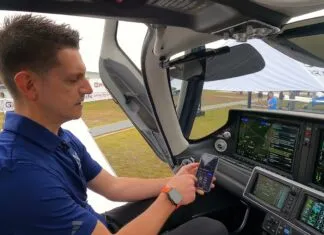Perhaps one reason for the 182 Skylane’s longevity is that it has good hauling capability, good dispatch reliability, a relatively comfortable cabin and maintenance shops know how to work on it.
Except for its intolerance for mismanagement on and around the runway—giving it an awful ranking in the NTSB reports—we suspect buyers are comfortable with long-term Skylane ownership. For many, it’s as far up the pecking order as they’ll go in their flying careers.
These days, you can buy a 182 with a full G1000 glass panel and a luxe interior for a price in the high $300Ks. A big investment, to be sure, but far less money (and far less speed) than a new Cirrus SR22, as one example.
Model History
Wind the clock back to 1956 to reach the beginning of the 182 evolutionary history. The fact that it looks like a giant Skyhawk which itself looks like an inflated 150 shows that Cessna just did what it does best: It built on its experience with previous designs and scaled them up. The 182 evolved from the 180 taildragger, so Cessna added the tri-gear, redesigned and relocated the exhaust and reworked the fuel vent system. Wet wings were used to hold fuel.
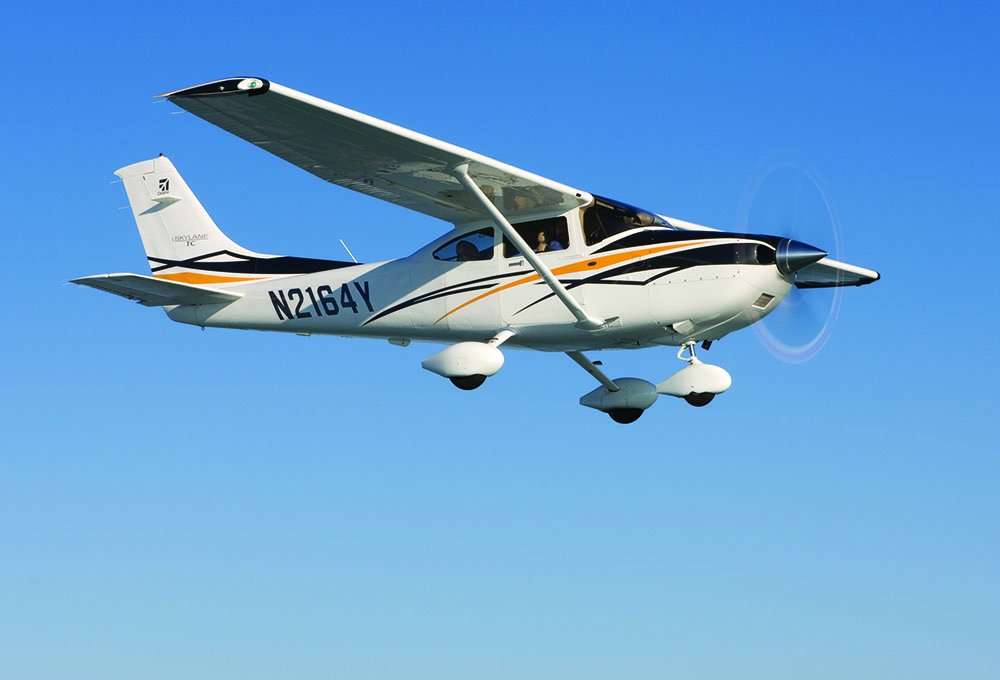
With the new gear, the 182 developed a nose-heavy tendency and Cessna never did sort this out.
Even new ones require deft trimming or the lazy pilot risks smashing the nosegear into the runway and crow hopping down the strip. It’s not unusual to see an older 182 with repaired gear and firewall due to a nose prang.
When the airplane appeared in 1956, the average price was just under $17,000. That’s equivalent to about $132,000 in 2010 dollars. Obviously, given the price of the 182T, aircraft prices have far outstripped inflation.
In the first 182s, power was provided by a 230-HP Continental O-470-L, an engine that proved to be such a worthy choice that some variant of it was retained until the airplane went out of production in 1986. The engine remains easily overhaulable, for prices under $30,000.
With its straight tail and windowless back, the original 182 looks like an antique, but Cessna soon sleeked it up with a rakish tailfin and the classic rear window everyone loves. Gross weight was 2550 pounds, compared to the modern Skylane max takeoff weight of 3110 pounds. (More on that later.)
Cessna embarked upon a continuing improvement program, introducing new model designations every couple of years. The 182A saw redesigned gear with a wider track and a lower stance, with the mains 4 inches shorter and the nose gear 2 inches shorter. The 182A got an external baggage door and a 100-pound higher gross weight.
In 1958, the Skylane name was applied—prior to this, the airplane was simply called the 182—and a deluxe version with wheel pants, standard radios and full paint instead of the trim-over-bare aluminum of the basic 182.
The 182B, with cowl flaps, came out in 1959. A swept tail was added in 1960 to make the 182C; it was basically a styling move, since the swept tail degraded spin recovery and reduced rudder power. The gear continued to be a problem, so in 1961, it was lowered again, by another 4 inches, on the 182D.
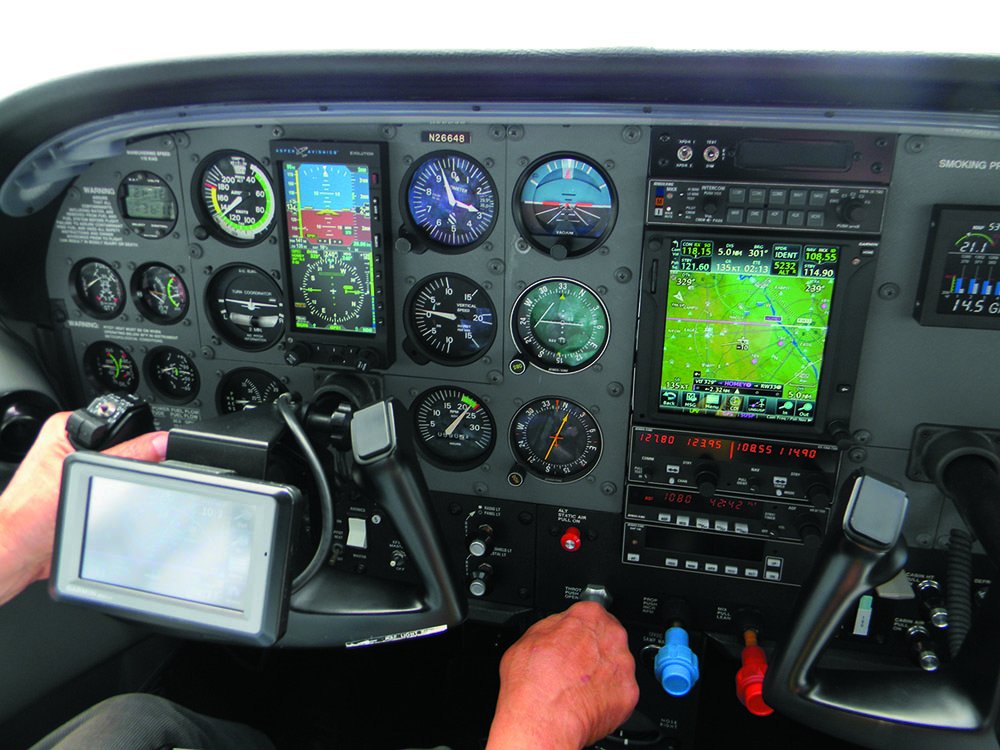
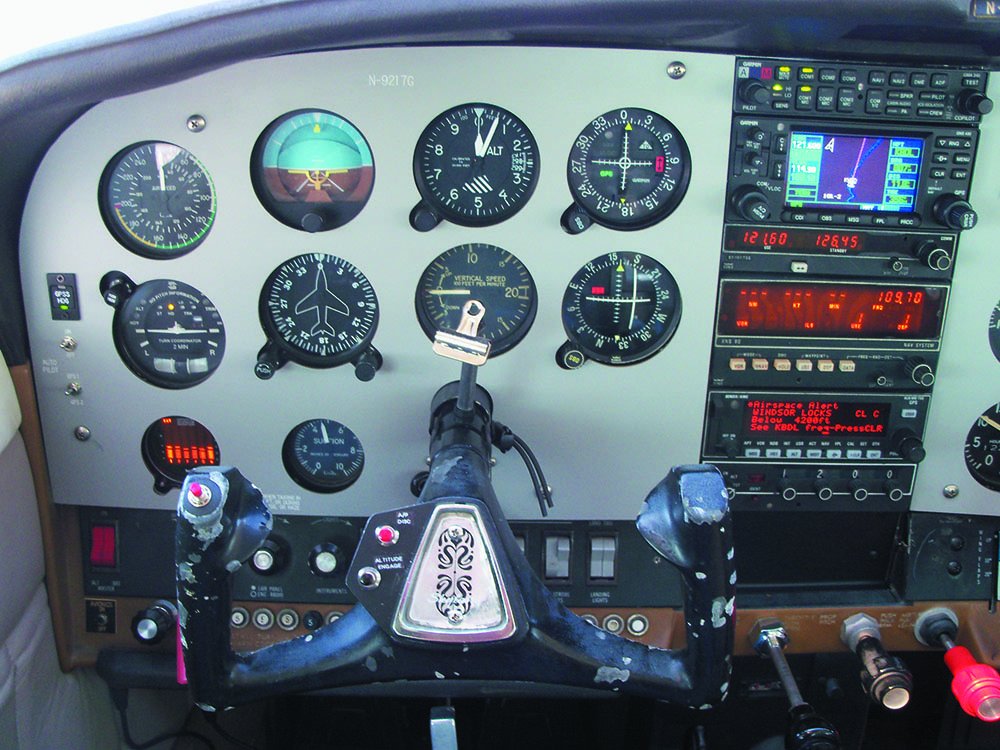
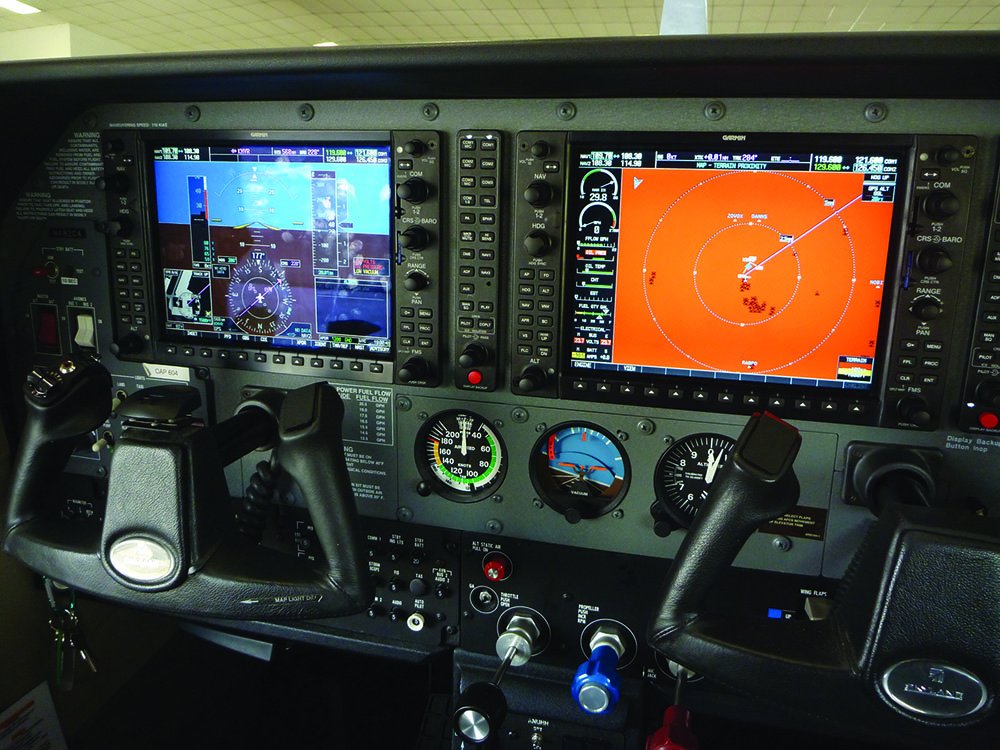
As it did with other models, Cessna put a rear window (Omni-Vision) on the airplane in 1962, with the 182E. This airplane was a significant upgrade over the earlier 182s and these are often thought of as “modern” Skylanes. The fuselage was widened four inches and the cabin floor lowered by nearly one inch to make more interior room.
Electric flaps became standard, the panel layout was updated and the adjustable stabilizer of the original gave way to a trim tab. The gear was beefed up (again) and the gross weight was boosted to 2800 pounds. A different engine variant, the O-470-R, was fitted. The 182E also had a redesigned fuel system, with bladders and the availability of auxiliary fuel, which raised capacity to 84 gallons.
Cessna also made changes that weren’t as obvious. To save weight, it used thinner aluminum for the skins and converted from sheet aluminum to roll aluminum, which was cheaper.
That also yielded an airplane with more surface imperfections, which ended the days of polished metal airplanes. Full paint jobs became standard, to hide the dimples. The new airplanes were only 10 pounds heavier than the old ones but performance actually suffered, with reduced climb, takeoff performance and service ceiling.
The 1963 182F sported a thicker, one-piece windshield and back window, a standard T-panel and an increase in horizontal stabilizer span of 10 inches. Flap pre-select also became standard. From the F model forward, until the S arrived in 1997, changes were less dramatic. The G model had an available kiddie seat for the baggage bay, while the 182H got an alternator to replace the generator.
Turbocharging, New Era
The next significant upgrade was with the 1970 182N model. Gross weight was increased to 2950 pounds and the spring-steel gear was swapped for tapered tubular steel legs that allowed more fore-and-aft movement.
Track was widened again, to 13.5 feet, improving ground handling somewhat. In 1972, a leading-edge cuff was added to the wing to improve low-speed handling, resulting in the 182P, a variant that stayed in production through 1976. The dorsal fin was extended and the cowling was shock mounted.
In 1981, the 182R got another gross weight boost to 3100 pounds, and an increase in standard fuel capacity, to 88 gallons, stored in wet wings. The bladders, which had been a problem, were dropped in 1978. Cessna also switched over to a 28-volt electrical system. A turbocharged version was added to the line in 1981, the T-182RII, powered by a Lycoming O-540 producing 235 HP. Production ended in 1986 with the 182R.
In 1997, when Cessna re-entered the market, it introduced a newly retooled Skylane for the next century. The changes were substantial, some cosmetic, some not. The biggest change was dropping the reliable O-470 for a 230-HP Lycoming IO-540-AB1A5; no surprise there, since Cessna and Lycoming share the same parent company, Textron.
But the change improved one thing. The O-470s were quite susceptible to carb icing and the injected Lycoming solved that. But like the O-470, the Lycoming is a bit of a fuel hog.
Further, the Lycs are known for lunching cams at the mid-time point, which the TCM engines don’t typically do. Also, the Continental is a smoother-running engine, in our view.
Cosmetically, Cessna did away with the old Royalite instrument panels, replacing them with painted metal. The interior—seats and cabin panels—is much improved, as is the instrumentation. Interior surfaces are now treated with epoxy-based anti-corrosion materials.
The latest 182 also has sealed wet wings, not bladders, making us wonder if owners will encounter leaks as the sealants age, as happens to Mooney owners. To get water out of the system, the airplane has no fewer than 12 separate drains, five on each wing tank and two at the bottom of the cowling. Although gross weight of the airplane is 3100 pounds, its typical empty weight is substantially higher than earlier models so it carries less than, say, an early 1980s RII. Speedwise, the normally aspirated model is respectable, cruising at just under 140 knots on 16 to 17 GPH. One reader told us the turbocharged 182 is capable of the mid-160 knots in the teens.
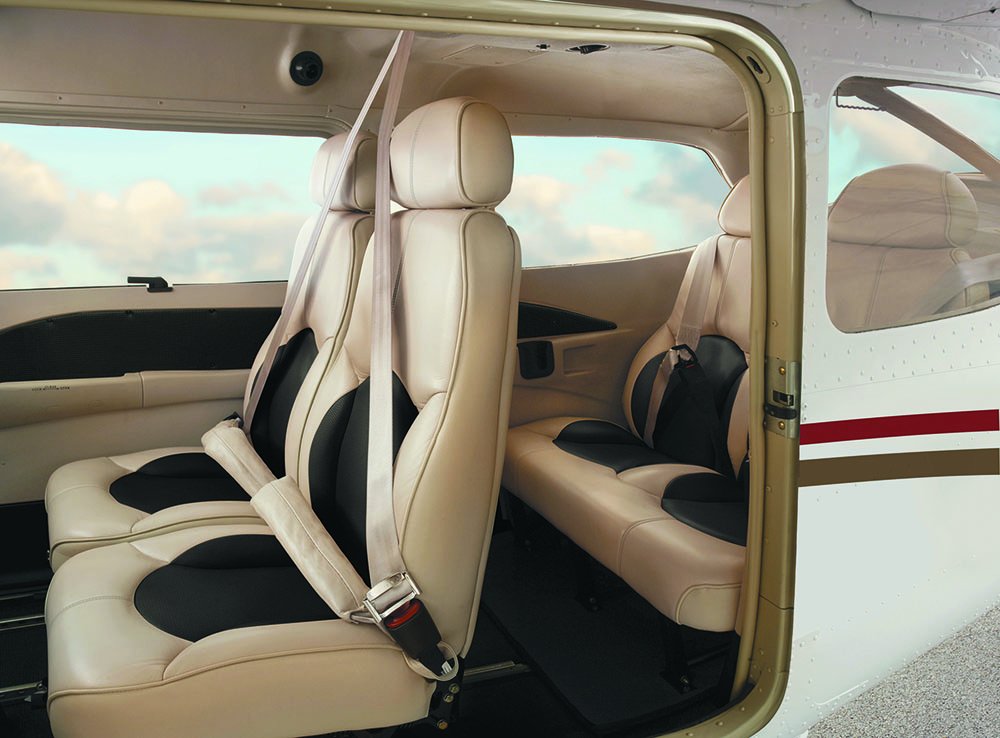
Maintenance wise, the 182S has proven the target of a number of Cessna service bulletins, with most of the work being covered under warranty. Thus far, we’ve heard no significant beefs related to unusual maintenance problems. The BendixKing avionics in the new Skylane (172 and 206, too) turned out to be hugely problematic. So much so that Cessna eventually switched to Garmin’s G1000 and never looked back.
Cessna teased the market with the $530,000 182 JT-A diesel-engine model, but last spring put the program on hold indefinitely. Test aircraft have flown with the 227-horsepower SMA SR305 turbocharged engine, but a turbocharger failure (resulting in an off-field landing) seemed to be the beginning of Cessna’s FAA certification troubles. Worth noting is this engine has operated pretty we’ll under European approval.
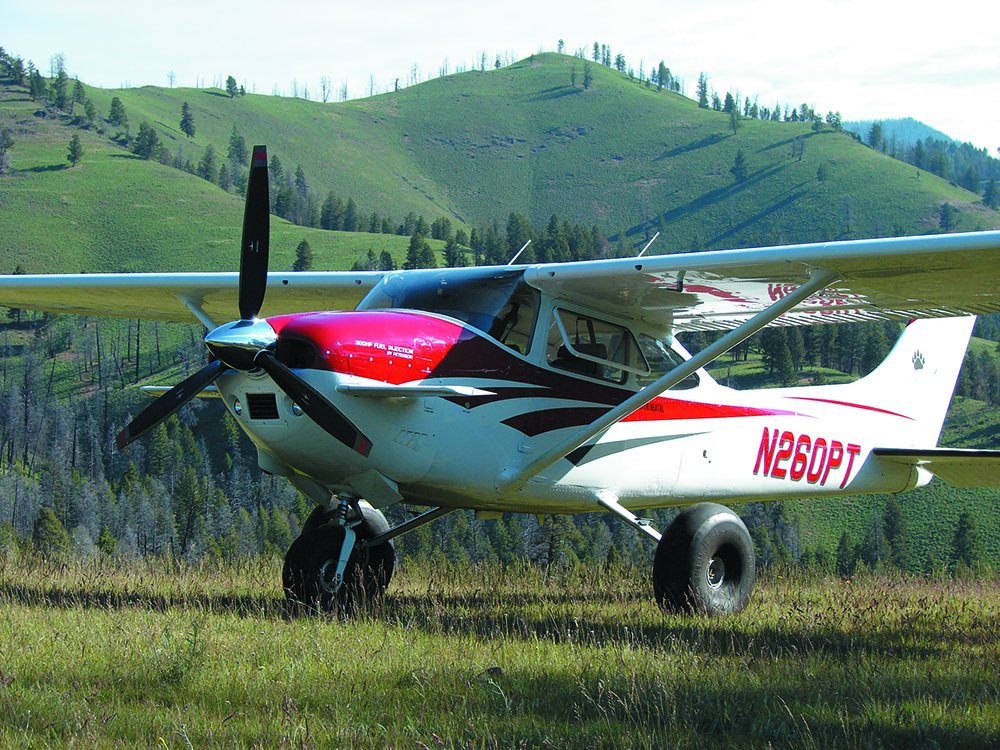
Textron currently offers the G1000-equipped 182T at a base price of around $480,000.
Market Survey
The market may have been more we’ll delineated when the 182 appeared but it’s a jumble now. There are so many used and new airplanes available, it’s hard to know what to compare the 182 to. The Skylane still offers lots of interior space and an unusually flexible payload/range combination that explains its enduring appeal.
Late-model Skylanes have depreciated to the point that a 1997 S model can be had for $135,000 or less. That’s a good value when you consider that one 10 years older—a lesser airplane, in our view—sells for roughly half that.
For equivalent capability, buyers may or may not favor Cessnas over Pipers. An average-equipped 1979 Skylane will fetch about $71,000 while an early 1980s Piper Dakota has held its value, bringing as much at $110,000, despite the fact the Cessna cost less when new.
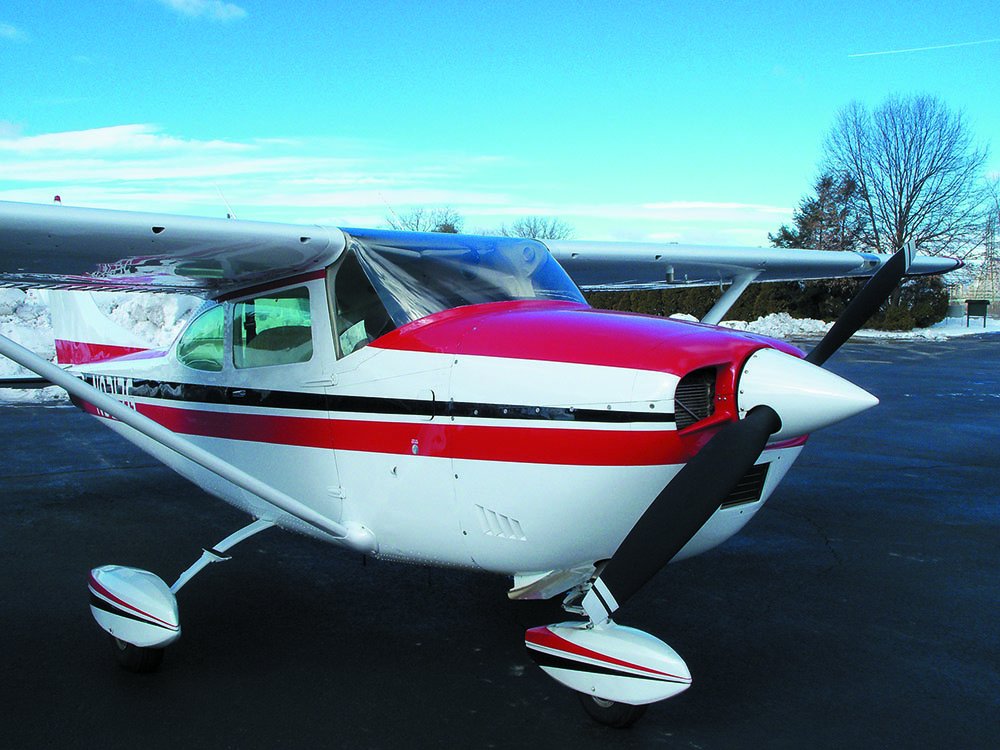
Which Skylane model? That depends on your budget. As noted, the latest models have started their depreciation slide and are looking to be better values than ever. These are well-equipped airplanes and are quieter and more comfortable than the earlier Skylanes.
For a real steal, look for 2005 models with G1000 suites for prices in the mid-$170Ks or less. But caveat emptor. Some aircraft haven’t been upgraded to WAAS (the upgrade cost is staggering), creating several problems, including the ability to shoot a modern GPS approach, plus the ADS-B position source dilema, since WAAS is required.
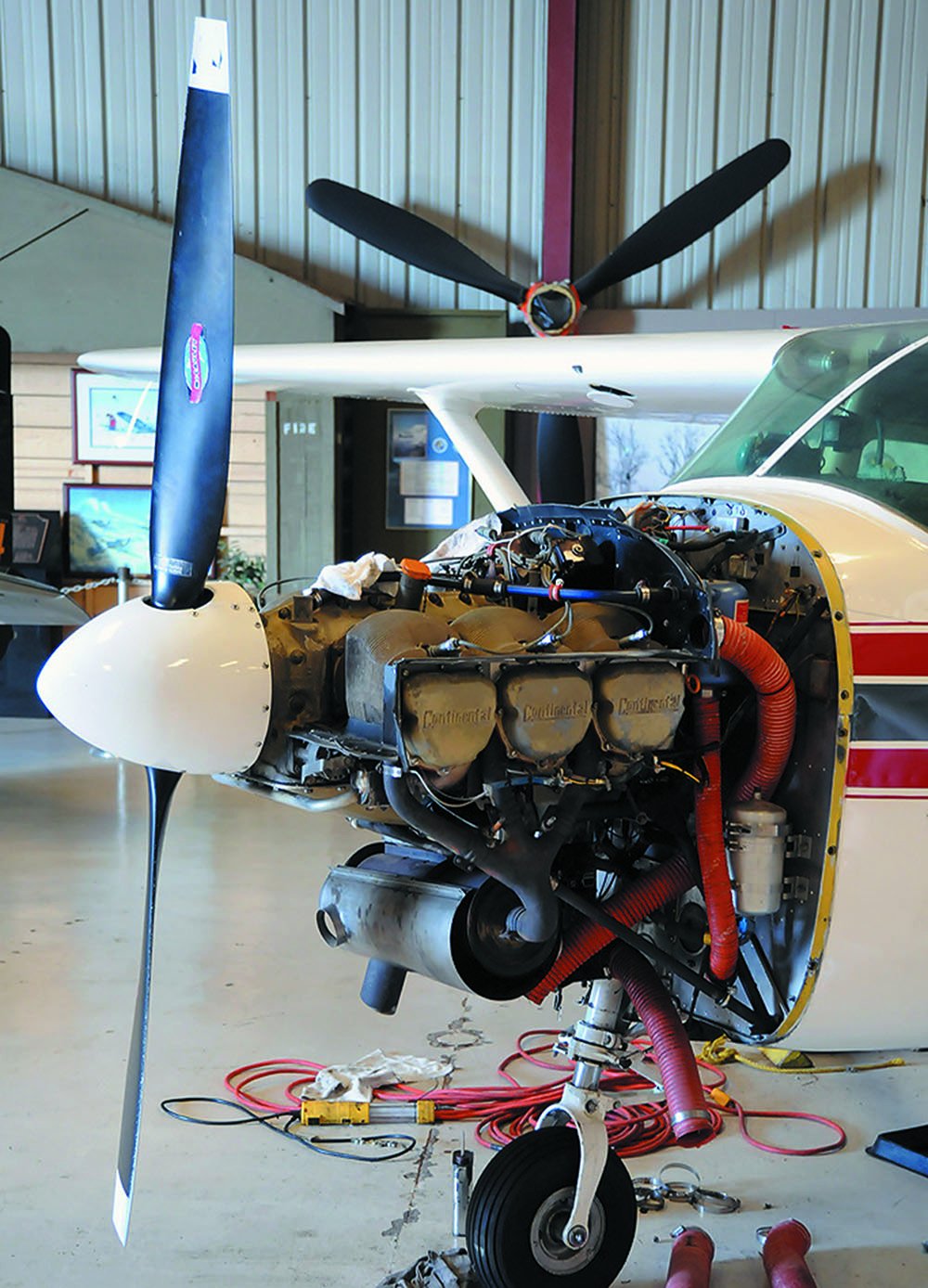
If you’re going older, most buyers seeking a practical, use-it-often airplane won’t want a museum piece, so that argues for a 182E or later. If your budget allows up to $90,000, the 1981 T-182 strikes us as a better combination of speed, value and hauling ability than any other airplane we can think of. You might have to invest in modern avionics, or ones to your liking. This could run an additional $50,000—or more—for a ground-up upgrade.
Performance, Handling
If fast is your mantra, the Skylane won’t be your airplane. Flogged to the limit, these are 135-knot airplanes, but more like 130 knots burning about 12 GPH. Range varies with year and tankage, of course, but typically, you can easily fly 900 still-air miles in the 88-gallon versions. That’s more endurance than most owners can muster.
Skylanes are prized for short and rough field ops and deservedly so. Long-time reader David T. Chuljian flogs his L-Model ‘Lane into the Idaho outback with good results.
The prop is we’ll clear of the ground and the gear is high enough to keep antennas out of the muck. If need be, the wheelpants can be removed. But still, it ain’t no traildragger. The nosegear will take some hits on rough strips.
A late-model 182 will get over a 50-foot obstacle in only 1115 feet; add a third more for safety margin and you’re still comfortably under 2000 feet. Initial rate of climb is good, thanks to the high horsepower, but it was better in the early models than the later ones, thanks to significantly higher gross weights.
But later models—the 182P and forward—have greater fuel capacity and higher gross weights and thus offer more loading/range flexibility. This, more than any other factor, makes the Skylane a first choice as a family airplane. It’s not much good to blaze along at 160 knots if you can only carry three people.
Although the CG range in the 182 series is adequate, the airplanes tend toward forward CG; ballast or bags in the baggage compartment help. Speaking of which, the baggage compartment is large and easily accessible through an exterior door. (The seals, when old, may leak and should be replaced.)
Handling? We’re not talking BMW-like. The 182 is a big, stable airplane and it takes some effort to break it loose from anything other than straight and level. And even if you do, its draggy profile means that speed builds slowly enough that only a somnambulant pilot could lose it in a dive. The Skylane is heavy in pitch, so timely trimming is a must, especially prior to or during the landing flare. Get lazy in the flare and the Skylane can slam the nosegear onto the pavement, buckling the firewall and leading to a huge repair bill. Roll forces in the 182 are nothing unusual; think of a Skyhawk with stiff cables. In a turn, the Skylane will want to overbank if left alone but so slowly that you should never get behind it.
As far as roll trim goes, fuel load and balance are important in the 182, particularly in airplanes with long-range tanks. The fuel system will self-siphon between tanks if the airplane is not parked on a level surface, so it’s possible to have an imbalance that won’t improve in flight. Even Cessna’s excellent L-R-Both fuel selector won’t prevent the tanks from draining at different rates unless a single tank is selected.
Transitioning from a Piper or smaller Cessna to a Skylane is a Ralph Kramden experience: You’ll definitely feel like a bus driver, albeit a regal one. The seats are high and upright and relatively comfortable. Although visibility is good forward and out the windows, the panel and glareshield are tall, requiring short pilots to use a booster seat. Heating is good for the front-seat passengers, less so for the rear. Wing root vents provide plenty of ventilation but also leak air during the winter, leading some pilots to tape the inlets. Cessna fixed this in the newest Skylanes, which are tight, quiet and warm.
Engine, Maintenance
In all of general aviation, there are perhaps a handful of engine-airframe combinations that are nearly perfect. The 182/O-470 pairing is one of them. Four variants of the engine were used, the L, R, S and U. The S (1975-1976) has been the most troublesome because of its revised piston ring configuration, intended to cope with the introduction of low-lead fuel. The U variant (1977-on) is desirable because of a 2000-hour TBO, though earlier engines are upgradeable from their 1500-hour TBO. It’s a rare Continental that makes it to TBO without some form of top overhaul but as big displacement engines go, the O-470 is more likely than most to get by without a top.
Because of its high population and simplicity, the O-470 series is relatively inexpensive to overhaul. One persistent weakness of the design, however, is the tendency of the carburetor to ice up. In carb ice conditions, you have to be on your toes in using carb heat—the accident history shows this.
In its singles, Cessna wisely adhered to the KISS theory for the fuel system. But early models still had their problems. The bladder fuel systems found on 1962 to 1977 Skylanes didn’t fit we’ll in the wing bays, resulting in the possible formation of a diagonal wrinkle across the bottom of the bladder. Combine that with water leaks due to deteriorated O-rings in the flush fuel caps and you can see the problem; the wrinkle acts as a dam to trap water that the pilot couldn’t remove during pre-flight sumping. On rotation, the water would spill over the wrinkle, reach the fuel pick-up and choke the engine on climbout.
The FAA’s response (AD 84-10-01) was to mandate the installation of additional drains and the inspection of the bladders for wrinkles. This is better known as the “rock-and-roll” AD, for it also directed pilots of airplanes not so modified to go out to the wingtip and shake it up and down to get the water to slosh over the wrinkles. This Marx Brothers-like procedure is certain to cause serious doubt in the minds of nervous passengers.
Otherwise, the Skylane is relatively free of serious ADs. A few have cropped up recently, but they’re one-time directives. AD 98-1-14 calls for replacement of mufflers; 98-1-1 mandates inspection and possible replacement of the alternate static air valve. Also of note are 97-21-2, inspection of certain cylinder installations, 97-15-1, replacement of specified cylinders and 96-12-22, recurrent inspection of the oil filter adapter.
More recently, Continental had issues with valve lifters coming apart and these impacted some O-470s. On page 25, we’ve published a summary of ADs against the S-model Skylane. Although the number is seemingly large, none are especially onerous.
Mods, Clubs
The Skylane may hold the record for having the most modifications available and many of them are good. The big ticket items are engines, replacing the stock O-470 with a Continental O-520 or IO-550, another TCM product with a good reputation. P.Ponk does the 520, contact pponk.com or 360-629-4812. Peterson Performance Plus (katmai-kenai.com) offers an impressive STOL package, including the full-up King Katmai mod, plus O-470 engine upgrades.
Air Plains (airplains.com, 800-752-8481) does O-520 and O-550 conversions for the Skylane. For another STOL package, see Sierra Industries at sijet.com or 830-278-4481. Texas Skyways offers the O-550 upgrade; check them out at txskyways.com or 800-899-7597.
There is the Horton Flight Bonus speed package; contact 800-835-2051 or stolcraft.com. More speed mods are available from Knots2U at knots2u.net or 262-763-5100 and Maple Leaf Aviation at 204-728-7618 aircraftspeedmods.ca. Met-Co-Aire has drag reducing wingtips; see metcoaire.com and phone 800-814-2697. If you want to slow down instead of speed up, contact Precise Flight (preciseflight.com or 800-547-2558) for a speed brake kit. Vortex generators are available from Micro Aerodynamics at 800-677-2370 or microaero.com.
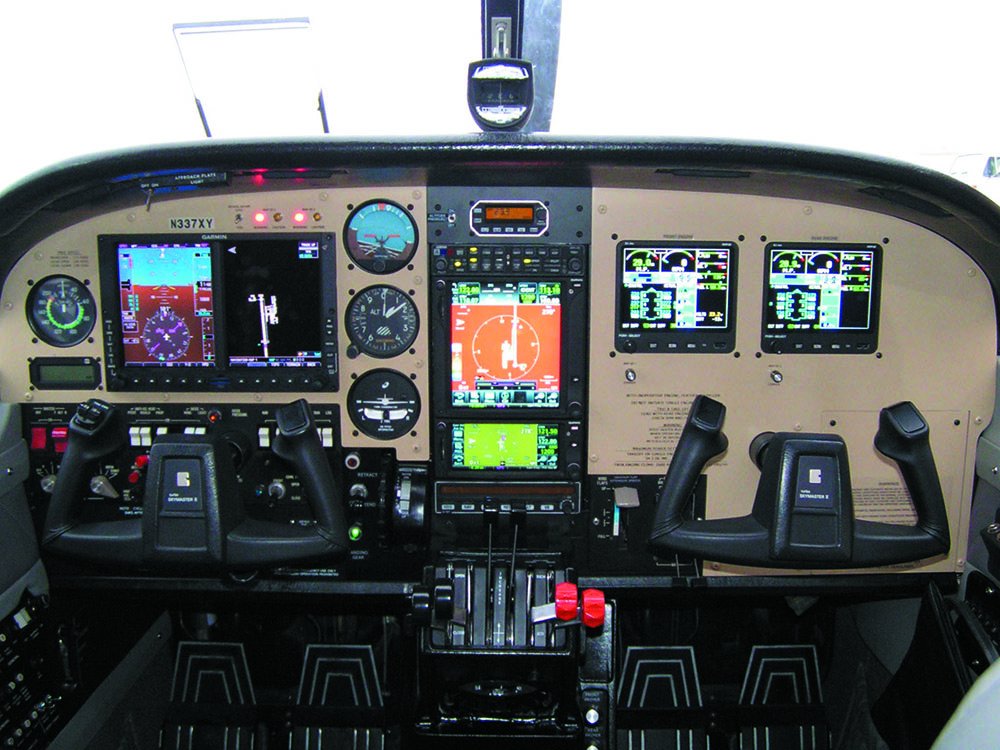
If six hours of endurance isn’t enough, see Monarch Air and Development for aux tanks and improved fuel systems. For more aux tanks, see Flint Aero (flintaero.com and 619-448-1551) and O&N at onaircraft.com or 570-945-3769. Last, don’t forget props from Hartzell; three-blade conversions are available. See www.hartzellprop.com or 937-778-4200.
There are a couple of Cessna groups. We highly recommend the Cessna Pilots Association, 805-934-0493 and on the web at www.cessna.org as the first stop in obtaining information before purchasing a Skylane. These guys have been at it for years and know the brand well. Find more support at the Cessna Owner Organization at 800-313-0582 or www.cessnaowner.org.
Owner Feedback
I have owned my 1981 Skylane II for 20 years. It is the R model with 3100-pound gross weight and wet wing fuel tanks (92 gallons useful). It has 2100 hours with original paint and interior. I really like the look of the small vertical empennage registration numbers, allowing a fuselage paint scheme uninterrupted by large ones.
The aircraft has been a Midwest and Montana aircraft, hangared for life, resulting in a corrosion-free airframe, inside and out. The only mods I added were a Garmin GNS530, an S-Tec 30ALT standalone altitude hold autopilot and the conversion of the battery to the gas recombinant type.
The altitude-hold system is a wonderful addition because the aircraft demands attention when hand-flying assigned altitudes during instrument flight.
The O-470U engine was replaced with a factory remanufactured replacement about 350 hours ago. It has strong cylinder pressure and almost zero oil consumption. I attribute some of this to always preheating the engine when it’s below 50 degrees, plus my use of AvBlend oil additive at each oil change. For the last 15 years I have participated in the annual inspection process, resulting in personal insight and knowledge of the aircraft and systems, in addition to saving a little on the labor cost. Annuals are about $1000, and my insurance premium is also roughly $1000.
Maintenance items over the years include rebuilding the exhaust system and replacing the air induction ducting system between the filter and carburetor. I also replaced the flush-style fuel filler caps with the umbrella style, preventing rain water ingestion around the seals.
Cowl flap hinges develop wear, requiring replacement to prevent inadvertent departure from the aircraft. All the rubber fuel tank connections have been replaced, as have the cowl fasteners with stainless hardware.
I think 182R ownership is made easier because it is basically the same airframe as being manufactured today. Parts are available from Cessna and other sources.
I usually operate the engine at 2400 RPM and 20 inches of MP. This results in a true airspeed of 125 knots at 5000 feet, burning about 12 GPH leaned to 50 degrees on the rich side of peak EGT.
One thing to remember about the 182 is the potential for carburetor icing, made easier with a standard carburetor venturi temp gauge. Another thing I learned early on was to aggressively lean the carburetor during all ground operations to prevent a rich idle mixture.
The aircraft is an excellent hauler with an empty weight of 1829 pounds as configured. Landings are made shorter with 40 degrees of flaps, when required, but you might want to add a bit of power in the flare just before touchdown when using full flaps. Those landings can then be greased just like the other flap settings.
Arthur Sundeen
via email
I was a first-time plane buyer in spring of 1998. While I had gotten my pilot certificate as a teenager in 1971, I had not flown since 1973.
As a low-time pilot I needed simplicity, and for commuting I needed speed, dispatch reliability and some-weather-flying capability. Since I like small airfields and dirt strips, good prop clearance and good short field performance was wanted. As I would be taking it all over the U.S., I wanted any mechanic to be able to take care of it.
As I would be taking friends and family, I needed four seats. As I had some money (but not a lot), I needed a plane that was affordable to acquire and operate. All in, this is a perfect specification for a legacy Cessna 182. I ultimately purchased N9339G, a 1972 P-model. After new paint and interior, it’s now N314PY.
An instrument, commercial and multi-engine rated pilot, I initially flew it 200 hours per year, but for the past eight years I average around 100 hours per year flying it most weekends, including traveling with my wife to visit friends. Other times I fly to practice instrument approaches or basic airmanship. I still have not gotten tired of steep turns, stalls or precision power-off landings in this airplane.
As I have been using the plane fairly seriously, I have slowly been upgrading. It is now a particularly capable 182, especially with the Texas Skyways O-550 engine upgrade. At 5000 to 8000 feet, it burns 15 GPH (ROP) at 145 knots true. At 17,500 feet I see 9 GPH and 115 knots true. This is useful when heading east. The aircraft has tremendous high density altitude performance.
With the 40 degrees of flaps and the AoA system, plus the 182’s fat wing, I can fly it safely at 50 knots. This makes getting in and out of 1500-foot airfields comfortable. Perhaps a better pilot could reliably go even shorter.
The aircraft has Flint extended range fuel tanks in the last internal wing bay, for a total of 102 gallons usable, instead of 79. The additional two hours of endurance adds utility.
During a major avionics upgrade, I had all the 1972 vintage wiring removed and replaced with modern wires and pullable circuit breakers, in addition to replacing all of the antennas, signal cable and connectors—beautifully done and reliable, too. I also added a 70-amp alternator.
Avionics mods include a Garmin GNS530W, SL30, S-Tec 30, Angle of Attack system, Avidyne EX500 MFD with approach charting, TAS and TIS traffic systems, EDM800 engine monitor, Aspen PFD with synthetic vision. I don’t recommend the $2000-plus Aspen ESV software upgrade. It’s just not engineered right to be useful, in my opinion.
The cowling and wingtip dual HID pulsating recognition lights are useful, however. When in continuous mode, they are plenty bright enough to land at unlighted fields.
The aircraft has a TKC deicing system. It’s not approved for known icing, of course, but it enables me to fly through New England all winter with just the occasional cancellation—something you can’t otherwise do. As the TKS fuel tank make access to the empennage difficult, I had a DER approve a rear access panel.
My longest nonstop trip in N314PY was 10.5 hours from Flagstaff, Arizona, to Teterboro, New Jersey. This included two picnics at 17,500 feet and three restroom breaks (the 182 gives lots of space for easy maneuvering inside.) I landed with 45 minutes of fuel remaining. My longest wander was two weeks as far north as I could still find drums of 100LL. I made it to Resolute, Pond Inlet and Qikiqtarjuaq.
I now fly without the wheel pants installed. I like the improved view (one of the benefits of a high wing, in addition to easier access and staying out of the rain), and maybe take a one- to two-knot hit.
As you can see, sort of everything about this 182 has been swapped/replaced/improved. The airframe is clean and I treat it with Corrosion X every other year to keep it that way.
I can’t think of any downside to my Skylane. I fly it at night, in weather, with passengers—although though not all three simultaneously. Like any plane, you have to keep up with maintenance. That’s not cheap, but as most every mechanic can work on a 182, it is about as reasonable as an airplane can be.
My honest all-in cost is $18,000 for the first hour of the year. Insurance is $2900 for $170,000 on the hull and $1 million smooth through USAIG, and brokered by Sutton James in Connecticut. My hangar is $4500 per year, oil and small stuff is $1000, annual inspections around $2000, capital costs are around $5000. Then there are database upgrades at $1000-plus, $1000 for training, plus imperative magazines like Aviation Consumer. After all that, add $125 per hour—$75 for gas and $25 for engine and prop reserve.
If I had known for real how much plane ownership would really cost (I think real all-in cost for my annual 100 hours is $30,000) I would not have bought the plane.
But, if I had known how much I absolutely love everything about flying and owning the plane, I not only would for sure have gone ahead, but would have done so a decade earlier.
A legacy 182 is a fabulously balanced machine. I’m 18 years into this now and still loving it.
William Kahn
via email


